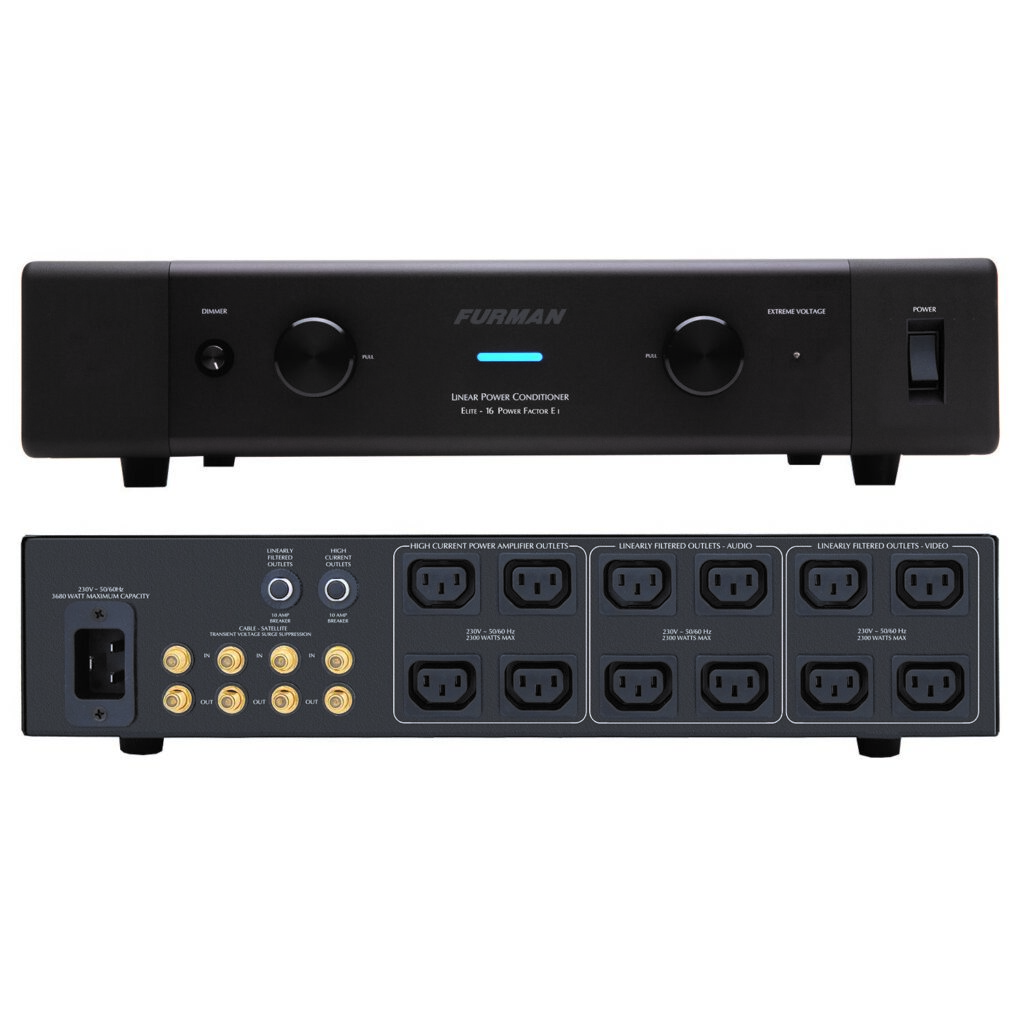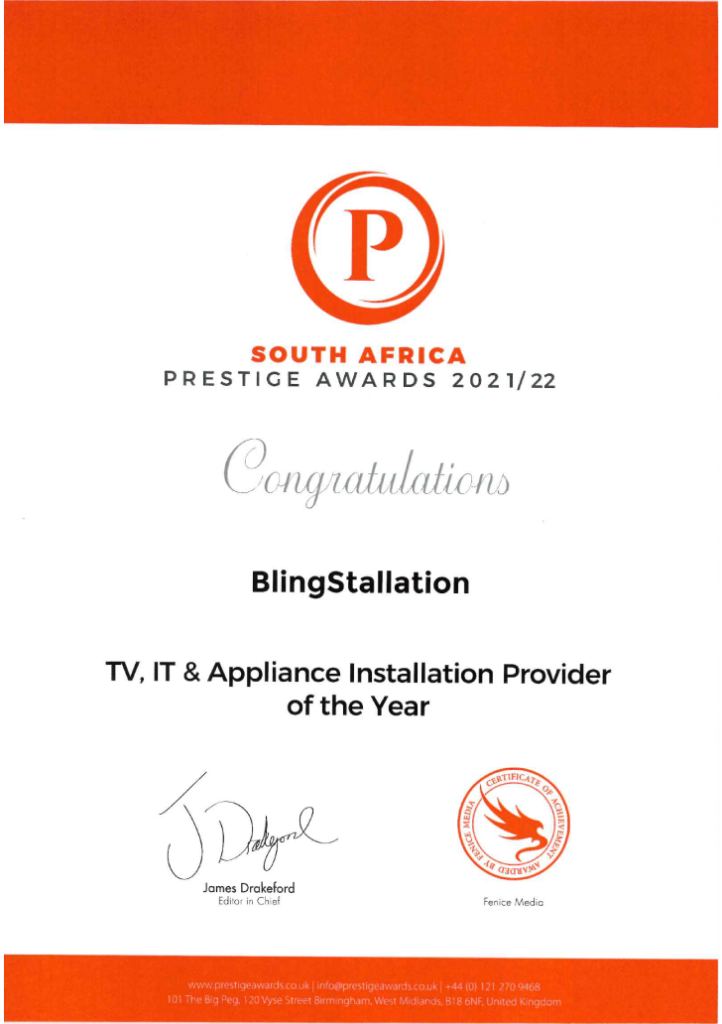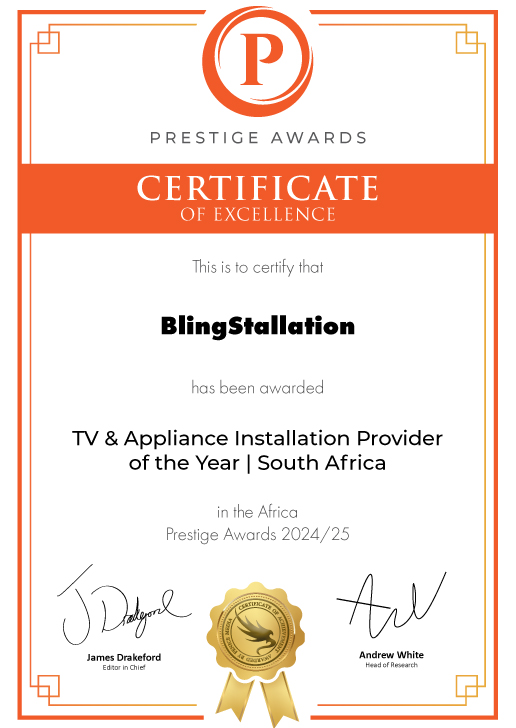Investing in the latest cutting edge technology without professional installation, setup and calibration is an absolute waste of your money … let BlingStallation seamlessly connect and integrate your new Smart TV into your home, ensuring that your TV is safely and securely connected to the Internet. We ensure that optimum network security is maintained when connecting your Smart TV to your home network.
What is Smart TV?
Smart TV is any TV that has internet access built in allowing it to access a range of online services including video on demand, social networking and instant messaging. Some TVs even feature a full web browser to allow access to most websites.
These days, most mid to high range TVs will have Smart functionality and even budget models and brands are starting to include some online features.
In order to access the extra features offered by a Smart TV, you will need some sort of Internet connection. Most Smart TVs will feature an Ethernet port on the back allowing you to plug it directly into your home broadband router. Some models are also capable of accessing Wi-
The features available on your Smart TV will vary depending on the make and model of your TV but most will allow access to popular social networking sites like Facebook and Twitter. Some feature IM applications like Skype and, with the addition of an optional webcam, some higher end TVs will even allow you to do full screen video calling with your friends and family.
Probably the best feature of a Smart TV is the ability to access Video on Demand services. This could range from free services like YouTube for watching the odd video clip, movie trailer or music video, to subscription based services like Netflix that give access to an online library of movies and TV shows to stream whenever you want.
What are the benefits of Smart TV?
The vast majority of modern televisions now have ‘smart’ capability, and it’s getting increasingly hard to buy a non-
The vast majority of modern televisions now have ‘smart’ capability, and it’s getting increasingly hard to buy a non-
Apps: Apps on smart TVs either come pre-
Web browsing: Most smart-
Additional services: Smart-
What you will need for your Smart TV to be “Smart”?
- Internet: You’ll need an internet connection to get your smart TV online, ideally broadband. Most smart TVs are now wi-
fi enabled, meaning you can wirelessly connect them to your internet router. Most have built- in wi- fi, but some require a wi- fi dongle and it might not be supplied with the TV. You can also connect your TV using an Ethernet cable, although it’ll need to be close to your router unless you have a long lead. - Decent broadband speed: This is essential if you want to stream video. It’s best to go for an unlimited broadband package so you can avoid any extra changes for exceeding your data limit while streaming.
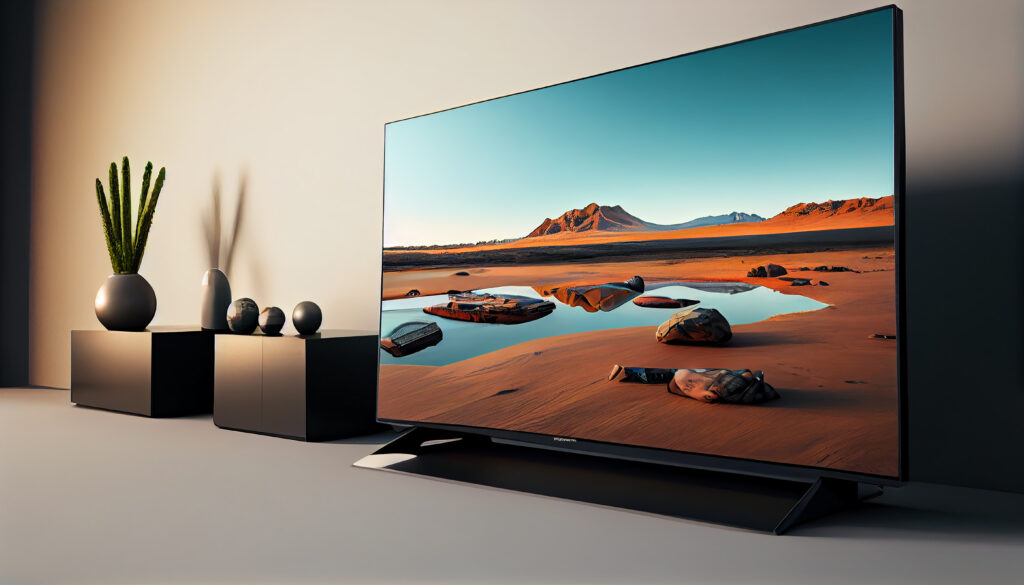
What is Smart TV tracking?
Smart-
This can have benefits, such as more personalised recommendations of things to watch, but there are also potential downsides.
Smart-TV manufactures are able to track and monitor the way you use your television like never before, including what you watch, what buttons you press on the remote and the websites you visit on the TV’s browser.
Read More
This can have benefits, such as more personalised recommendations of things to watch, but there are also potential downsides. In theory, the TV brands can gather vast quantities of data on you and, in some cases, use that information to make money through posting targeted adverts on your smart-TV service.
You give permission for this to happen by agreeing to your TV’s T&Cs. You can decline them and still watch TV. In many cases, however, that results in you losing access to some smart functionality of the TV.
Here’s a brand-by-brand breakdown on 5 Brands on how to turn any tracking off, and what you lose if you do:
Samsung: Samsung tracks you if you agree to its T&Cs. If you decline, you can’t access the smart-TV service. If you do agree you can still turn off tracking of your viewing habits by declining the ‘recommendations privacy notice’ in the smart hub settings menu.
LG: As LG has stopped tracking (as of September 2014), it has removed options for you to block it. LG’s T&Cs still permit it to track you, and if you decline them you can’t access any apps or the LG Store, although you can still use the web browser.
Panasonic: If you don’t accept Panasonic’s T&Cs, you lose access to all apps, the web browser and content recommendations. If you accept them, you can turn off tracking of your viewing habits via ‘Menu > Network > My Home Cloud settings > Notice > Stop collecting information’.
Sony: Sony tracks you like the rest of the brands, but doesn’t do so to provide advertising on your smart-TV service – just to provide you with recommendations of things to watch. You can opt out of tracking by ticking ‘Disable Upload Data’ at the setup stage, however you’ll lose the recommendations.
Toshiba: You can’t access any of the smart-TV services, including the apps and web browser, unless you agree to the T&Cs. Once you do, you can go to ‘Smart hub Settings – Log Upload agreement – and then click ‘disagree’. This should stop tracking. You lose features such as personalised recommendations and the MediaGuide EPG, but can still use the apps and web browser
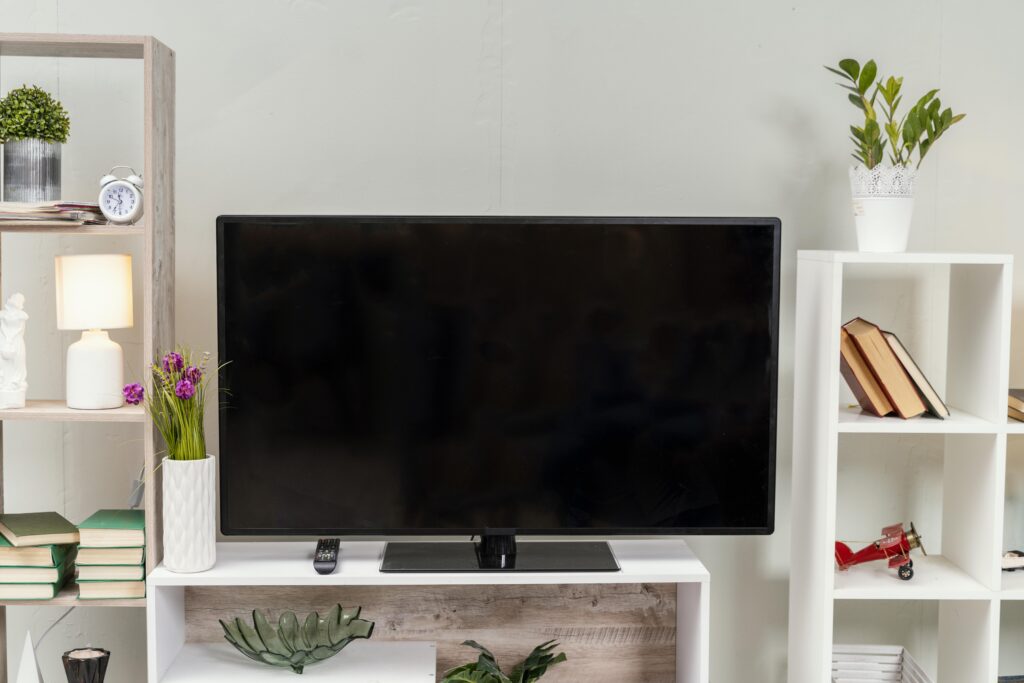
Smart TV Security
When connecting any device to the Internet, including a television, it is vitally important to protect yourself from the more negative aspects of the online world, including hackers and malicious threats. Here’s some steps to make your TV more secure while going online.
When connecting any device to the Internet, including a television, it is vitally important to protect yourself from the more negative aspects of the online world, including hackers and malicious threats. Here’s some steps to make your TV more secure while going online.
Disable cookies: You can usually disable cookies, including third-
Secure your network: Make sure you properly secure your home wi-
Set strong passwords: Use a strong password for your home wireless router, and do the same for any Internet accounts you may use on your smart TV. Strong passwords typically use upper and lower case letters, numbers and ‘special’ characters such as !, ?, % and &.
How to make your current TV smart
If you don’t want to splash out on a smart TV, there are more affordable ways to get Internet services on your current television. These include:
Streaming boxes: A wide range of devices allow you to transform your standard TV into a smart TV at a fraction of the cost. The likes of Now TV, Apple TV, Roku streamers and Google Chromecast can access video on-
Computer: If you connect your PC to your TV, you can use it as a large computer monitor. For this, you’ll need an analogue VGA input. Some TVs can be connected via a digital input, either a DVI socket, or more commonly via an HDMI input configured for PC screen resolutions (check your TV manual for instructions on this). If your PC only has a DVI output, HDMI to DVI cables are available online, costing just a few pounds.
Smart Product: You can connected a Smart Product / Device to your TV giving you instant access to Smart functionality via the Smart Device. Smart Products include Smart Blu-
What Smart TV Brands do I choose from?
Smart TVs are available from all the major manufacturers –
Samsung Smart TV
Almost all of Samsung’s newer televisions are ‘smart’, starting with the 5500-
Samsung’s smart-
What apps do you get on Samsung smart TV?
- Facebook: Yes
- Twitter: Yes
- Skype: Yes
- YouTube: Yes
- BBC News: Yes
- BBC Sport: Yes
- Amazon Instant Video: Yes
- Netflix: Yes
- Knowhow Movies: Yes
- NOW TV: No
- BBC iPlayer: Yes
- ITV Player: Yes
- 4oD: Yes
- Demand 5: Yes
LG Smart TV
LG now offers two flavours of smart TV –
LG’s new webOS smart-
Just like Samsung, LG offers two types of remote control –
What apps do you get on LG smart TV?
- Facebook: Yes
- Twitter: Yes
- Skype: Yes
- YouTube: Yes
- BBC News: Yes
- BBC Sport: Yes
- Amazon Instant Video: Yes
- Netflix: Yes
- Knowhow Movies: Yes
- NOW TV: Yes
- BBC iPlayer: Yes
- ITV Player: No
- 4oD: No
- Demand 5: Yes
Sony Smart TV
Sony offers a good range of apps but the continued absence of ITV Player and 4oD remains an issue. However, you do get Sony’s own Video Unlimited service pre-
Sony’s smart TV service is hard to use when compared to the other brands. Navigating the smart-
What apps do you get on Sony smart TV?
- Facebook: Yes
- Twitter: Yes
- Skype: Yes
- YouTube: Yes
- BBC Nes
- BBC Sport: Yes
- Amazon Instant Video: Yes
- Netflix: Yes
- Knowhow Movies: No
- NOW TV: No
- BBC iPlayer: Yes
- ITV Player: No
- 4oD: No
- Demand 5: Yes
Panasonic Smart TV
Panasonic’s smart-
Some Panasonic sets come with TV Anywhere, an app service that lets you remotely watch TV channels or stored PVR content on a smartphone or tablet, even while away on holiday.
Panasonic’s smart-
What apps do you get on Panasonic smart TV?
- Facebook: Yes
- Twitter: Yes
- Skype: Yes
- YouTube: Yes
- BBC News: Yes
- BBC Sport: Yes
- Amazon Instant Video: No
- Netflix: Yes
- Knowhow Movies: No
- NOW TV: No
- BBC iPlayer: Yes
- ITV Player: Yes
- 4oD: Yes
- Demand 5: Yes
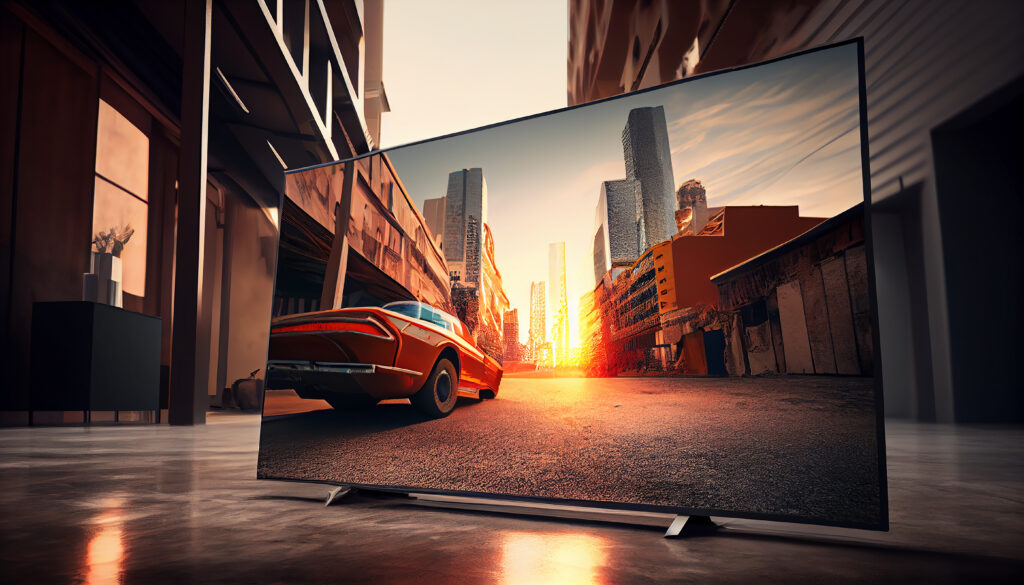
What Smart TV Brands do I choose from?
Smart TVs are available from all the major manufacturers –
Samsung Smart TV
Almost all of Samsung’s newer televisions are ‘smart’, starting with the 5500-
Samsung’s smart-
What apps do you get on Samsung smart TV?
- Facebook: Yes
- Twitter: Yes
- Skype: Yes
- YouTube: Yes
- BBC News: Yes
- BBC Sport: Yes
- Amazon Instant Video: Yes
- Netflix: Yes
- Knowhow Movies: Yes
- NOW TV: No
- BBC iPlayer: Yes
- ITV Player: Yes
- 4oD: Yes
- Demand 5: Yes

LG Smart TV
LG now offers two flavours of smart TV –
LG’s new webOS smart-
Just like Samsung, LG offers two types of remote control –
What apps do you get on LG smart TV?
- Facebook: Yes
- Twitter: Yes
- Skype: Yes
- YouTube: Yes
- BBC News: Yes
- BBC Sport: Yes
- Amazon Instant Video: Yes
- Netflix: Yes
- Knowhow Movies: Yes
- NOW TV: Yes
- BBC iPlayer: Yes
- ITV Player: No
- 4oD: No
- Demand 5: Yes
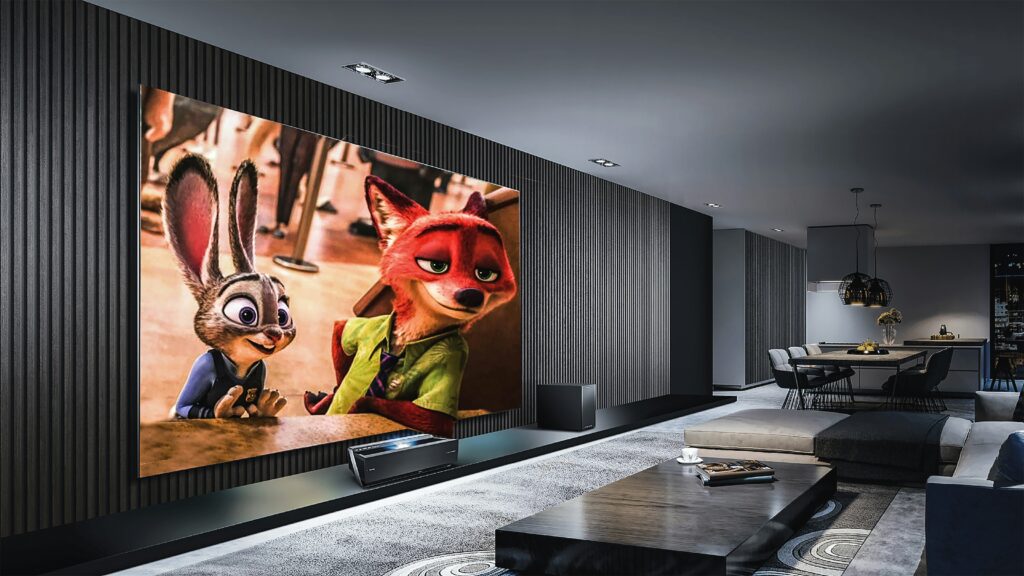
Sony Smart TV
Sony offers a good range of apps but the continued absence of ITV Player and 4oD remains an issue. However, you do get Sony’s own Video Unlimited service pre-
Sony’s smart TV service is hard to use when compared to the other brands. Navigating the smart-
What apps do you get on Sony smart TV?
- Facebook: Yes
- Twitter: Yes
- Skype: Yes
- YouTube: Yes
- BBC Nes
- BBC Sport: Yes
- Amazon Instant Video: Yes
- Netflix: Yes
- Knowhow Movies: No
- NOW TV: No
- BBC iPlayer: Yes
- ITV Player: No
- 4oD: No
- Demand 5: Yes
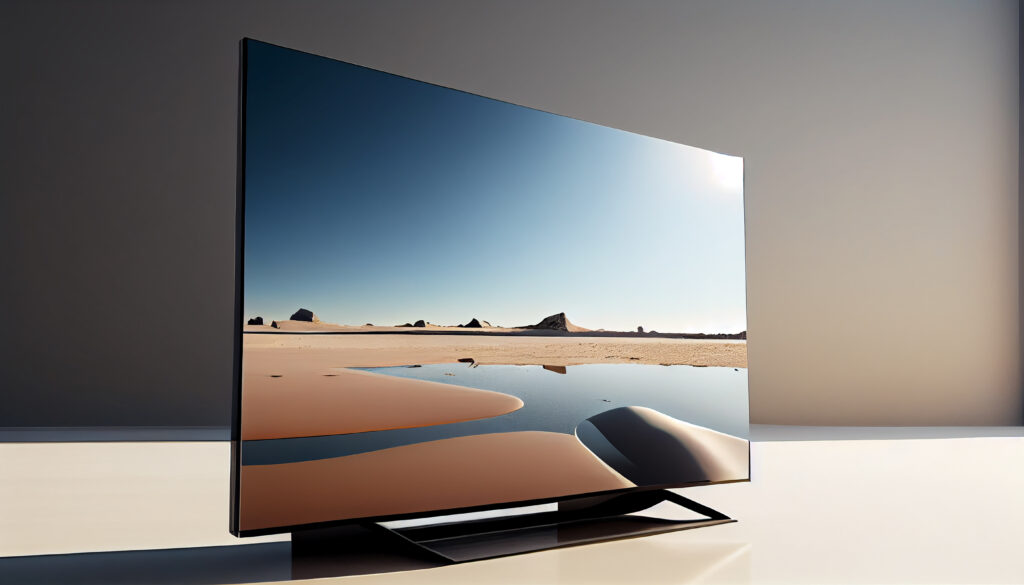
Panasonic Smart TV
Panasonic’s smart-
Some Panasonic sets come with TV Anywhere, an app service that lets you remotely watch TV channels or stored PVR content on a smartphone or tablet, even while away on holiday.
Panasonic’s smart-
What apps do you get on Panasonic smart TV?
- Facebook: Yes
- Twitter: Yes
- Skype: Yes
- YouTube: Yes
- BBC News: Yes
- BBC Sport: Yes
- Amazon Instant Video: No
- Netflix: Yes
- Knowhow Movies: No
- NOW TV: No
- BBC iPlayer: Yes
- ITV Player: Yes
- 4oD: Yes
- Demand 5: Yes
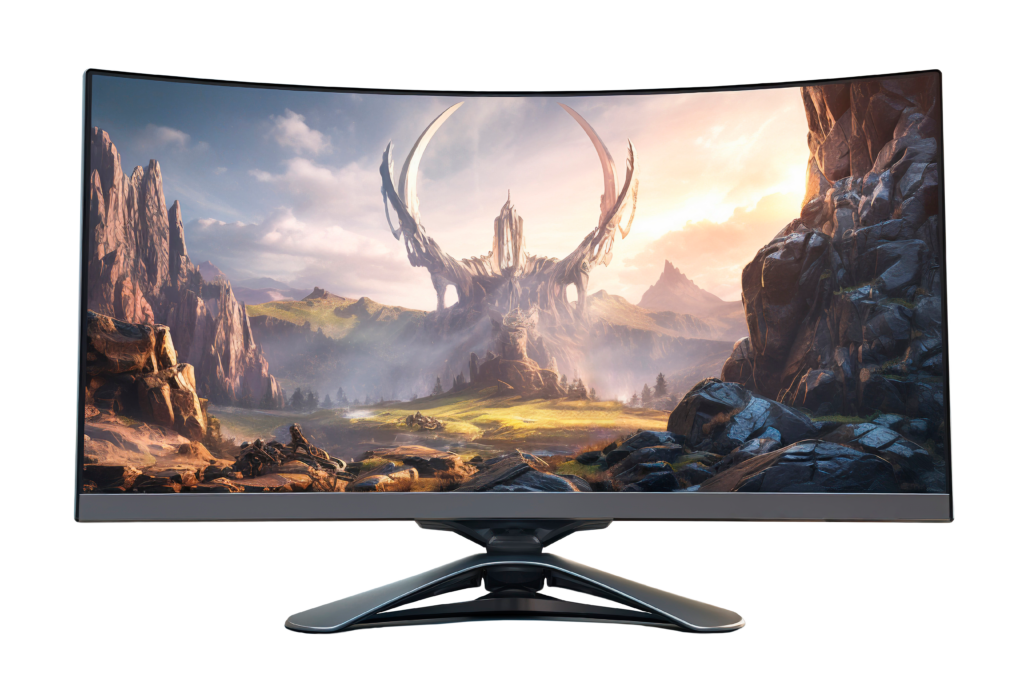
Power Surge & Lightning Protection Solutions
FUR-AC-210A-E Compact Power Protector
- NON SACRIFICIAL -Can take multiple direct strikes up to 6000V,dissipate them as heat and come back online again
- Linear filtration circuitry cleaning the mains power will provide better audio and sparkling video clarity that none of the competitors can come close to! This has been proven over and over again.
- Generators & Inverters create noise in the mains– Clean this up with a Furman
- Load shedding sometimes creates in rush surges– Protect with a Furman
- Micro spikes/ Transients Protection: these occur through the mains all the time-wearing down components- Protection gives you longer lamp life on projector lamps-less reboots and so much more…
- ( read the case study on pg 2 of the info sheet below.)
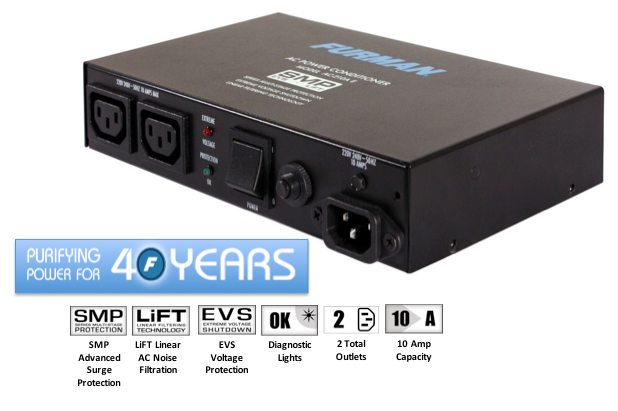
FUR-PL-PRO-DMC-E Rack Mount Power Conditioner
- NON SACRIFICIAL -Can take multiple direct strikes up to 6000V,dissipate them as heat and come back online again.
- Linear filtration circuitry cleaning the mains power will provide better audio and sparkling video clarity that none of the competitors can come close to! This has been proven over and over again.
- Series Multi-Stage Protection (SMP) provides virtually maintenance-free AC surge suppression
- Retractable LED lamps illuminate a cabinet or rack full of equipment
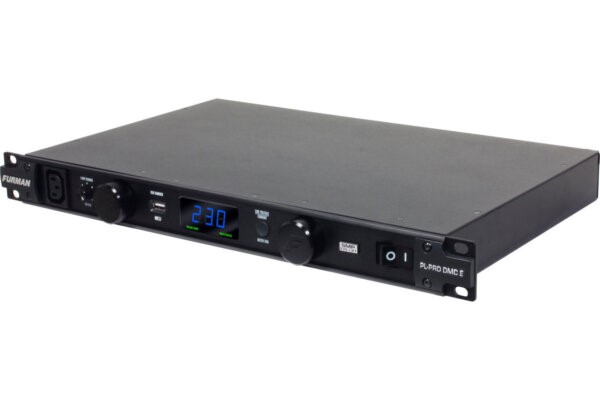
FUR-ELITE-16-PF-Ei Rack Mount power conditioner
- Power Factor Technology provides over 55 Amps peak charge surplus current for power-starved amplifiers
- NON SACRIFICIAL -Can take multiple direct strikes up to 6000V,dissipate them as heat and come back online again.
- Ultra-Linear filtration circuitry cleaning the mains power will provide better audio and sparkling video clarity that none of the competitors can come close to! This has been proven over and over again.
- Series Multi-Stage Protection (SMP) provides virtually maintenance-free AC surge suppression
- Ultrasonic bi-filtering isolates digital and video circuits from analogue components
- Zero ground contamination circuitry protects critical digital components
- Retractable LED lamps illuminate a cabinet or rack full of equipment
